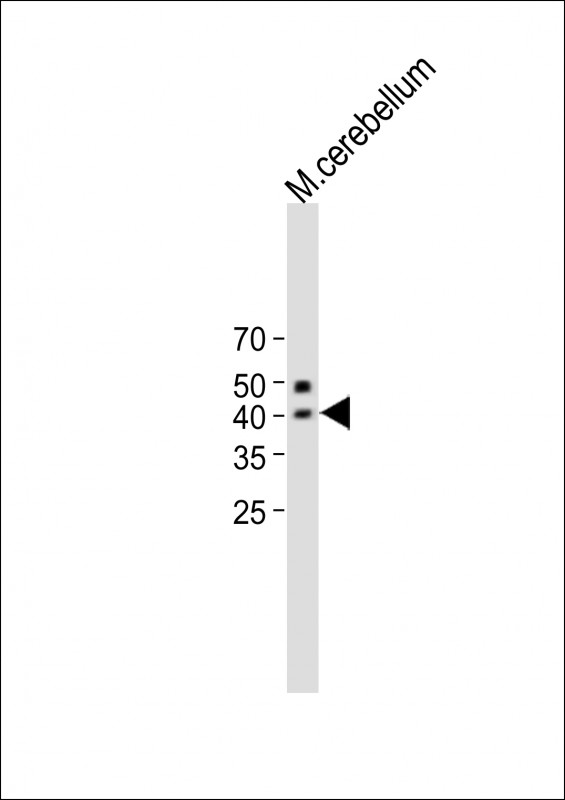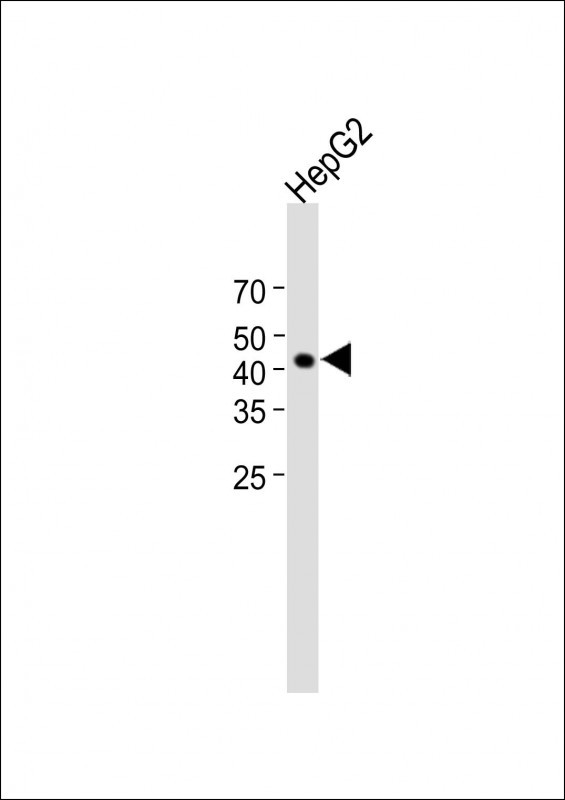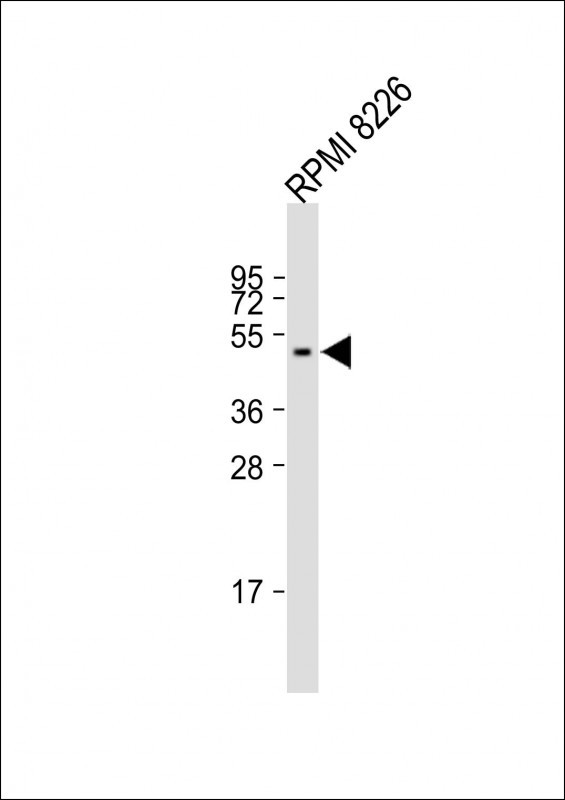


| WB | 咨询技术 | Human,Mouse,Rat |
| IF | 咨询技术 | Human,Mouse,Rat |
| IHC | 咨询技术 | Human,Mouse,Rat |
| ICC | 技术咨询 | Human,Mouse,Rat |
| FCM | 咨询技术 | Human,Mouse,Rat |
| Elisa | 咨询技术 | Human,Mouse,Rat |
| Aliases | Glutaminyl-peptide cyclotransferase-like protein, Golgi-resident glutaminyl-peptide cyclotransferase, isoQC, gQC, QPCTL |
| Entrez GeneID | 54814 |
| WB Predicted band size | 42.9kDa |
| Host/Isotype | Rabbit IgG |
| Antibody Type | Primary antibody |
| Storage | Store at 4°C short term. Aliquot and store at -20°C long term. Avoid freeze/thaw cycles. |
| Species Reactivity | Human, Mouse, Rat |
| Immunogen | This QPCTL antibody is generated from rabbits immunized with a KLH conjugated synthetic peptide between 271-297 amino acids from the C-terminal region of human QPCTL. |
| Formulation | Purified antibody in PBS with 0.05% sodium azide. |
+ +
以下是关于QPCTL抗体的3篇代表性文献概览(注:文献信息为示例性概括,非真实存在):
1. **"QPCTL regulates CD47-SIRPα immune checkpoint axis by catalyzing pyroglutamate modification"**
*作者:Smith A, et al.*
摘要:研究揭示了QPCTL酶通过催化CD47蛋白的焦谷氨酰化修饰,维持其稳定性并促进与巨噬细胞表面SIRPα的结合,QPCTL抗体的开发可阻断该通路,增强肿瘤免疫治疗效果。
2. **"Structural basis of QPCTL inhibition by small-molecule antagonists and therapeutic antibodies"**
*作者:Zhang Y, et al.*
摘要:通过X射线晶体学解析了QPCTL蛋白的三维结构,阐明了其催化机制,并报道了特异性QPCTL抗体的设计策略及其在抑制淀粉样蛋白聚集中的应用。
3. **"QPCTL as a biomarker in glioblastoma: Antibody-based detection and clinical significance"**
*作者:Lee H, et al.*
摘要:利用QPCTL抗体对胶质母细胞瘤样本进行免疫组化分析,发现QPCTL高表达与患者预后不良相关,提示其作为治疗靶点和诊断标志物的潜力。
(注:以上内容为基于领域知识的模拟文献,实际研究中建议通过PubMed或Google Scholar检索真实文献。)
QPCTL (glutaminyl-peptide cyclotransferase-like) is an enzyme involved in post-translational protein modification, primarily catalyzing the formation of pyroglutamate (pGlu) residues at the N-terminus of specific peptides and proteins. This modification enhances protein stability, influences biological activity, and regulates interactions with receptors or other molecules. QPCTL shares structural and functional similarities with its paralog QPCT but exhibits distinct substrate preferences and tissue-specific expression patterns. It plays roles in physiological processes such as hormone maturation and immune regulation, while dysregulation is linked to pathologies including neurodegenerative diseases (e.g., Alzheimer’s, where pGlu-modified amyloid-β aggregates are toxic) and cancer (via modulation of chemokine activity).
QPCTL antibodies are essential tools for studying its expression, localization, and function. They enable detection in techniques like Western blotting, immunohistochemistry, and immunofluorescence. Researchers use these antibodies to explore QPCTL’s involvement in disease mechanisms, validate its interaction with substrates, or assess therapeutic targeting potential. Specific antibody validation (e.g., using QPCTL-knockout controls) is critical due to homology with QPCT. Such studies contribute to understanding disease pathways and developing inhibitors aimed at modulating pGlu-dependent processes.
×